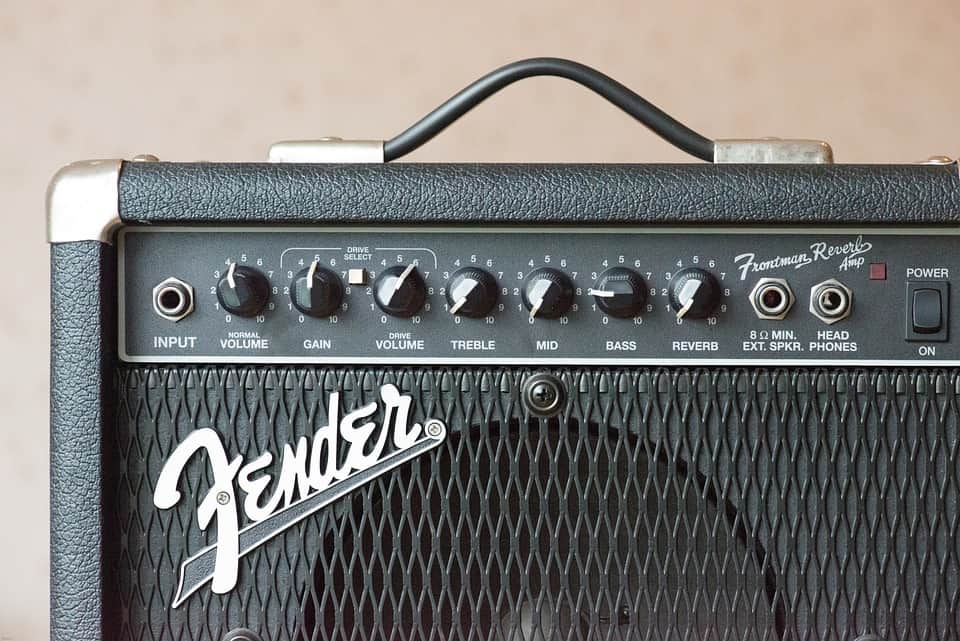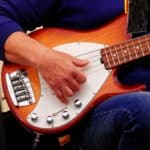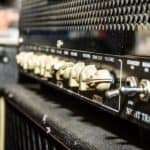In the great world of rock, one of the main characters has always been the electric guitar. We all know that this amazing instrument has been responsible for the most emotive and remarkable solos in music history.
However, its name is kind of controversial.
Why do we call it an electric guitar?
Is there something on it that is specifically “electric”?
And last but not least, do electric guitars need power to actually work?
Electric guitars, ironically don’t need electric power to work. Despite all the equipment and wires we see on stage, guitars don’t need to be plugged into an outlet. What needs electric power are the amplifiers where you plug them in. An amp’s power consumption, however, is comparable to that of a fridge.
So, have we been victims of a swindle? What is the electric thing about the guitar then? If you want to clear your mind, continue reading, this article is the one for you.
Do electric guitars need to be plugged into the grid?
In short, not really, what you plug in is the amp. To have a better understanding of why electric guitars commonly need an amp we have to explain how they produce sound.
Acoustic guitars have a hollow body that works as a resonator, when you strum the strings the vibrations travel through the air. The problem with an electric guitar is that when you play the strings, the vibrations aren’t strong enough to make sound.
Of course, you can hear your guitar when it is unplugged but the output will be lower than an acoustic guitar. That’s why you need an amplifier.
This gear, as it is shown in its name, takes an input signal, amplifies it, and outputs the sound through the speakers on it. This whole process is driven by electric power.
What is the electric thing about an electric guitar then?
Right, now you may think it is obvious, they are called “electric” guitars because they require an amp to work and this amp needs to be connected to electric power. That is true but is not the only thing that makes guitars “electric”.
Although guitars don’t require to be connected to electric power, they are driven by static electricity. This is because of the pickups placed where a guitar player strums. This device emits a magnetic field which is disrupted by the vibrations the strings produce.
These vibrations generate electricity when they go through the magnetic field.
Another remarkable feature is the fact that they need an amp to make sound. The vibrations produced by strings are received by the pickups which send the signal to the amp.
Once there, as we mentioned before, it is boosted and sent to the speakers to produce sound.
Moreover, the circuit of an electric guitar is essential to its proper performance. Without the inside components, an electric guitar wouldn’t be more than a piece of solid wood that produces some low noises. The internal parts are crucial and they are an important characteristic to call the guitar “electric”.
Does an electric guitar consume any power?
Actually, an electric guitar does not consume energy by itself. What does need a source of energy is the amp where you plug in your instrument.
You may think that an amp requires a lot of energy but in fact, they just consume 100 to 200 watts per hour on average. To visualize how much it is, you can compare it with the fridge’s consumption, which is more or less the same, or maybe with your conditioned air, which is ten times higher.
Consequently, your electricity bill wouldn’t be affected by the use of your equipment.
How do electric guitar pickups work?
An electric guitar pickup is an inductive sensor packed with magnets that are wrapped around a coil. The most popular pickup is the Stratocaster pickup, commonly known as Single Coils.
They are usually two or three strips placed where you strum the guitar strings. As they are permanently magnetized, when the strings vibrate the coil produces a signal which is the one we previously talked about.
Passive pickup circuits and active (battery-powered) circuits

There are two kinds of pickups, passive pickup circuits, and active battery-powered circuits. The traditional magnetic pickups are the passive circuit.
They have two main components the magnet and the copper wire and the signal they create is lower than active pickups.
Passive pickups are more sensitive to the strings’ vibrations, because of this, the tone has more expression. They are usually cheaper than active circuits which makes them more affordable.
However, the output of these pickups is limited in comparison to its counterpart. In addition, passive circuits have a great deal of feedback which could interfere with the sound of your instrument.
Contrarily, active pickups have a power source itself, that’s why they have a higher output and the difference relies on the consistency of the tone and power. As they produce less feedback, the tone is clearer.
This is great to play using high-gain distortions. One issue you have to bear in mind is how active circuits are powered.
They work thanks to a battery, usually a V9 one, and if the battery runs out of energy, your instrument would be simply useless. What is more, they are more expensive than passive pickups and are more common among bassists and guitar players who played mainly metal.
Amps and speaker systems do need electric power

As we’ve discussed before, amplifiers and speaker systems do need electric power to work but, why does this happen?
Well, in fact not both of them need a source. I know that at first could be confusing but let me explain to you.
Most speakers use a driver which converts audio signals into audio waves.
This process is driven by electromagnetic principles (the same way pickups work) so it does not require electric power to function.
However, we are talking just about the speakers, what about the amps? The main reason why an amp needs to be powered is its own performance.
What an amp does is apply gain to the signal, this gain comes from an electric source. The interesting thing is that as every amp requires power, the speakers also need electricity to work.

Hello there, my name is Ramiro and I’ve been playing guitar for almost 20 years. I’m obsessed with everything gear-related and I thought it might be worth sharing it. From guitars, pedals, amps, and synths to studio gear and production tips, I hope you find what I post here useful, and I’ll try my best to keep it entertaining also.





